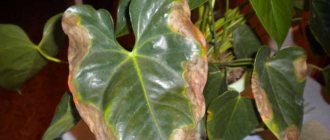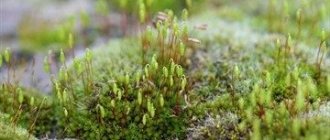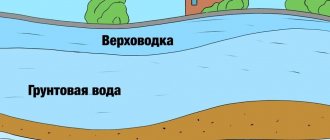Owners of personal plots are often faced with the need to get rid of old stumps. They can be removed in different ways. But it’s easier to do this without uprooting by burning, using chemicals, folk methods, and so on.
In this article we will look at how to destroy a stump from a cut tree, what effective methods should be used, how long the process takes, and what precautions should be taken.
Features of removal without uprooting
Many gardeners are interested in: how to get rid of tree stumps without uprooting? After all, if the site is not inhabited, and there are no buildings or flower beds on it, the easiest way is to drive special equipment to it and get rid of all the old snags at once. But, if the site already has a house, outbuildings, flower beds and flower beds, it will not be possible to solve the problem in this way. In this case, the following solution methods are used:
- destruction by fire;
- burning with chemicals;
- destruction by water.
Each individual option has its own advantages and disadvantages. You can choose an ecological method using water or fire, or you can choose a chemical one (using special preparations). Each summer resident decides independently, based on personal preferences, wishes, availability of free time and financial capabilities.
Attention: if there is only one stump on the site, it is not necessary to get rid of it. If you approach its arrangement with creativity, you can make an original piece of art - an object that will become a worthy decoration for your personal plot.
What kind of saltpeter is needed?
Saltpeter is a combination of nitrogen and another substance. The effect on plants varies depending on its variety. There are several types of it for stump removal:
- Ammonia – it is a nitrate fertilizer with nitrogen content. It is also called ammonium nitrate, ammonium nitrate. It is white in color and granular in structure and shape. Ammonia composition should not be stored near flammable substances or at hot temperatures.
It is known that nitrogen provokes the beginning of green growth, as it is the most important element for every plant. Using ammonia, you can naturally acidify the soil. Nitrogen helps roots and fruits produce enough protein, and growth and fruiting proceed more actively.
- Potassium - this product has a high level of nitrogen compounds. It is a translucent crystal. They dissolve in water and have no color. Elements of inorganic origin begin to melt upon reaching 34-35°C. The potassium group does not have a specific odor, and at high levels of humidity and if storage rules are not followed, the substance cakes.
In addition to removing wood residues, the potassium composition is also used as fertilizer. It is able to strengthen the root system of vegetable seedlings, activate photosynthesis, and increase productivity by 1.5-2 times. Mainly used on peaty-type substrates and loams.
- Sodium nitrate, also called Chilean nitrate. It has the shape of solid crystals and a whitish color. Sometimes it is diluted with impurities or colored with yellow and gray shades. This substance does not emit any odor and has a slightly bitter and salty taste. Sodium nitrate is hygroscopic.
The substance is a by-product of ammonia and nitric acid. Compared to potassium nitrate, it dissolves faster - 100%. In addition to removing wood residues, it is also used as a fertilizer to neutralize turf, podzolic, and peaty soil. It works well in combination with water-soluble fertilizers containing phosphorus and potassium.
The first type is more recommended for stump removal, but the others are also quite applicable. They completely burn out the remaining wood. The substance spills onto the stump, causing it to undergo an active process of self-decomposition. Gradually he turns into dust.
Timing for the destruction of stumps without uprooting
If it is necessary to remove snags from the site quickly, only special equipment and a saw will help. And if timing does not play a special role, you can use various methods of destruction without uprooting. For example, using saltpeter will only give results after a few months. And the use of urea will take about a year. But this method is environmentally friendly and does not harm the soil. The longest option is to use table salt. The whole process will take about one and a half years. In any case, removing tree roots without uprooting using any means or preparations will take several months.
A young tree in place of an old one
This option is suitable for cases when there is no other way to destroy an old, thick, large stump. They cut it down to the ground with a chainsaw, hollow out a hole in the trunk, fill it with soil mixed with fertilizers, and plant a seedling. Roots, developing in old wood, destroy it, and the substances released during decay are used as a nutrient medium. After a few years, a young plant will grow in this place.
Related article:
Smart autumn work in the garden from the Country Agronomist
Chemical methods
If the time to remove old snags does not matter, that is, you can wait several months or a year, then you should use chemical methods. With their help, various problems are solved, such as how to remove stumps from trees in the country without uprooting. To do this, it is enough to use: saltpeter, urea, vitriol, herbicides.
The use of chemicals is suitable if construction is planned on the cleared site. If plants are planted on the ground, then the aggressive substances that enter the soil along with chemicals will cause significant damage to them. In this case, harmful substances will first have to be neutralized so that the soil becomes suitable for vegetation.
Saltpeter
Saltpeter is one of the most common substances when getting rid of old driftwood. With its help, not only the above-ground part of rotten wood is removed, but also powerful deep roots.
Attention : saltpeter, like urea, does not destroy wood, but makes it more flammable. This method is suitable if you plan to burn the remaining wood in the future.
The process itself looks like this:
- Large holes are drilled into the wood.
- Nitrate (potassium or sodium) is poured into the holes to the very top and watered.
- The holes are closed with wood plugs (they can be made from thick branches using a knife). The plug must fit into the hole a few millimeters. At the same time, it should fit tightly into the hole.
- Next, the snag is wrapped in polyethylene.
Using urea
When it is not possible to remove one or more small and large stumps, they are left to rot naturally. Carbamide (urea) will accelerate decay. It should not be confused with ammonium nitrate - these are different substances. Urea is considered safe, but ammonium nitrate is toxic and explosive.
Urea is poured into a perforation of maximum diameter, water is poured, tied with a film or plugged with a clay or wooden stopper. Over the course of two years, the wood slowly softens, as if rotting. After this, the residue can be removed easily, without much effort.
Related article:
Autumn application of fertilizers on the site
Advantage of the method:
- tissues rot completely;
- there is no soil contamination;
- acts more gently than saltpeter;
- physically accessible.
The disadvantages include the high consumption of materials and the length of the process. For example, to fit 1 kg of urea, you need about 30 holes (depth 30 cm) with a diameter of 1 cm or eight with a diameter of 2 cm, four when drilling with a 3 cm drill.
Non-standard solution to the problem
Many summer residents are interested in how to remove a stump from a cut tree? But few people think that the remains of wood can be left on the site, simply giving them an original and aesthetic appearance. Landscape designers have created a whole trend, which is often used when arranging private courtyards. It is called rutarium, and this name means the preparation of decorative compositions from roots and stumps.
Splitting up
You can splurge on buying a special tool designed for crushing stumps. When rotating at high speeds, the cutter plunges into the soil and grinds the roots. The base of the stump is also crushed, and the sawdust, into which the roots and base have turned, becomes organic fertilizer.
Buying such a machine will be a little expensive, but you can chip in with the entire dacha cooperative or call specialists who do this kind of work and have the necessary equipment.
When is the best time to treat?
If we are talking about preventing the spread of wood disease or wood rot, then salt, vitriol and other chemicals or folk remedies are added at any time of the year. This will help prevent infection of other plants on the site.
If there is no particular urgency, then it is best to introduce medications and folk remedies at the end of the warm period. That is, late autumn. To be more precise, a few weeks before the first frost. This is exactly the time that is enough for the reagents to penetrate below the soil level and saturate the wood even during severe frosts throughout the cold period of the year.
Other options
The use of stumps and snags in landscape design is only gaining popularity. It is not necessary to remove them from the ground. You can win profitably without investing large physical and material resources.
Old stumps are used as flower beds, decorated with garden statues to stylize a fairy tale, and decorated with stones, mushrooms, and ferns.
Mushrooms
Some gardeners choose mushrooms by combining two methods: using the stump in the design of the site and slowly removing it. You can get rid of snags in this way in 2–3 years. The tree becomes infected with fungal spores. Stages:
- Grow mushroom spores on the substrate. Oyster mushrooms and winter honey fungus are suitable.
- Drill holes on the stump.
- Take the disputes there.
- Water the mushrooms periodically.
- In 0.5-1 year you will get a mushroom harvest.
- Over the course of several years, the stump will gradually dry out.
Mushrooms on a stump.
Water
A non-standard but effective method. Before the onset of winter frosts, water the stump heavily with water. If you can, pour the liquid directly inside. When frost sets in, the water will literally tear the tree apart from the inside. In the spring, when the snag thaws, there is a chance to get a completely rotten tree, the remains of which can be removed without much effort.
The second way to use water. Dig a hole near the stump. After this, wash the roots under pressure. The mud and water will go into the prepared ravine. After some time, the stump completely lags behind the soil. Chop the roots and remove the snags.
Precautionary measures
We looked at how to destroy a tree stump in different ways. Everyone chooses the best option for themselves. But in any case, you should observe the following precautions:
- when treating the soil with saltpeter, it is worth considering that in the coming months it will be impossible not only to light a fire, but also to smoke in that area;
- Copper sulfate in dry form is safe for people, but when water is added, it becomes toxic. Therefore, it is necessary to work with it in protective glasses, gloves and a respirator;
- when working with table salt, it is better to wear glasses so that it does not get into your eyes during sharp gusts of wind (here we are talking about fine salt);
- when burning wood residues after treatment with chemical reagents, a pit is dug around it for fire prevention purposes;
- when burning wood residue, place a bucket of water and a fire extinguisher nearby;
- When burning wood treated with chemicals, do not stand on the leeward side. Because you can inhale toxic substances.
In conclusion, it is worth noting that we looked at how to remove tree roots from a site. It is worth noting that this process is in any case long and labor-intensive. The main thing is to decide in advance whether you will use chemicals or use traditional methods. In any case, you will have to be patient. Since it will still take some time to destroy snags on the site.
Exposure to salt
Of all the options, this is the most budget-friendly, since you don’t need anything other than salt and water. Its essence is that a concentrated solution of chloride is aggressive and destroys the structure of the wood. You need to drill deep channels, fill them with salt, soak them with water, wrap them tightly in cellophane or completely cover the entire stump with earth. Under the influence of salt, it will collapse in 1.5 years and you can uproot it with your own hands or burn it. The disadvantage of this method is that not only weeds, but also cultivated plants will not grow on salted soil.
The method only works on fresh sawn wood. On the old one, which has no juice, it is not effective.
Cross cut
Next, the top is divided along the top into four parts in the shape of a cross. This should be done with a chainsaw (in fact, the only tool required for this work).
Tatyana Arntgolts gave birth to a child from Mark Bogatyrev: the first photo of the baby
Daria Poverennova: my famous grandfather left Klara Luchko after one phrase
5 cases that prove that sometimes styling and light makeup are enough
"Clean Forest": quickly and efficiently
offers professional assistance in removing stumps without uprooting using chemicals. We will not only cut down, trim or cut down the tree, but also get rid of the stump in any convenient way. Cooperation with us is beneficial:
- Use of modern methods and technologies.
- Own fleet of equipment. The necessary tools and equipment are always available.
- Efficiency. Quick dispatch of specialists to the site.
- Cooperation with individuals and legal entities.
- Concluding a formal agreement with clients.
- Cooperation with government organizations and other structures.
Safety precautions
Here is a list of rules that are not written down in the documents, but their violation often leads to fires and injuries :
- Do not use gasoline or other flammable liquids to start the fire; if you accidentally spill it on your clothing and start a fire, you may suffer serious burns.
- Do not light a fire in windy weather. The stronger the wind, the higher the flame from burning wood, and the sparks fly much further. In addition, in windy weather, it is easier for a spark or flying ember to ignite flammable materials than in calm weather.
- Do not leave burning wood unattended; if something goes wrong and safety measures cannot stop the spread of the fire, you must immediately begin to extinguish it, and if the fire is too strong, call the fire department.
- When watching burning wood, always stand upwind (so the wind is blowing away from you towards the fire) to avoid inhaling smoke. This is especially important when burning chemically, because the smoke from wood impregnated with saltpeter is more pungent than from regular wood.











